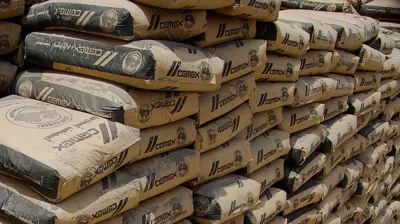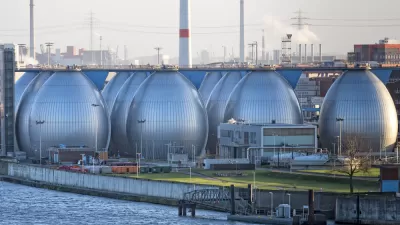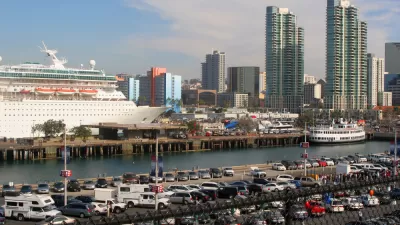A sand mine that has been operating since the very beginning of the 20th century has finally been shut down by California regulators. The site of the facility will be returned to more natural conditions.

Paul Rogers reports: "The last coastal sand mine in the United States, a Monterey Bay plant that scientists say has caused significant erosion of beaches in the area, will close in three years under a settlement agreement announced Tuesday with California officials."
The facility, the CEME Lapis plant has been operating with a license from the state, "claiming that its operations pre-date state laws such as the 1976 Coastal Act," according to Rogers. The facility produces an estimated 200,000 to 300,000 cubic yards of sand a year.
The turning point in the state's protracted battle against the facility came in May 2017, when the California State Lands Commission threatened legal action against the company. "The company already was under investigation from the California Coastal Commission and was facing years of protracted litigation and potential fines," according to Rogers.
For more on the end of the last coastal sand mine in the United States from the standpoint of some of the advocates who fought the facility, see a post by Jennifer Savage for the Surfrider Foundation.
FULL STORY: Controversial beachfront sand mining operation along Monterey Bay to close

Study: Maui’s Plan to Convert Vacation Rentals to Long-Term Housing Could Cause Nearly $1 Billion Economic Loss
The plan would reduce visitor accommodation by 25,% resulting in 1,900 jobs lost.

North Texas Transit Leaders Tout Benefits of TOD for Growing Region
At a summit focused on transit-oriented development, policymakers discussed how North Texas’ expanded light rail system can serve as a tool for economic growth.

Why Should We Subsidize Public Transportation?
Many public transit agencies face financial stress due to rising costs, declining fare revenue, and declining subsidies. Transit advocates must provide a strong business case for increasing public transit funding.

How to Make US Trains Faster
Changes to boarding platforms and a switch to electric trains could improve U.S. passenger rail service without the added cost of high-speed rail.

Columbia’s Revitalized ‘Loop’ Is a Hub for Local Entrepreneurs
A focus on small businesses is helping a commercial corridor in Columbia, Missouri thrive.

Invasive Insect Threatens Minnesota’s Ash Forests
The Emerald Ash Borer is a rapidly spreading invasive pest threatening Minnesota’s ash trees, and homeowners are encouraged to plant diverse replacement species, avoid moving ash firewood, and monitor for signs of infestation.
Urban Design for Planners 1: Software Tools
This six-course series explores essential urban design concepts using open source software and equips planners with the tools they need to participate fully in the urban design process.
Planning for Universal Design
Learn the tools for implementing Universal Design in planning regulations.
Ascent Environmental
Borough of Carlisle
Institute for Housing and Urban Development Studies (IHS)
City of Grandview
Harvard GSD Executive Education
Toledo-Lucas County Plan Commissions
Salt Lake City
NYU Wagner Graduate School of Public Service





























